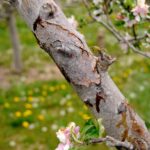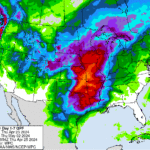REGISTRATION NOW OPEN! Attendees, exhibitors, and sponsors register here: Purdue Small Farm Education Field Day July 25, 2024 The 2023 Purdue Small Farm Education Field Day was held at the Purdue Student Farm in West Lafayette, Indiana. With 105 participants registered, the in-person event featured an array of on-farm demonstrations and was a resounding success. Nearly 84% of[Read More…]
Articles from 2024
79 articles found.
REGISTRATION NOW OPEN! Register here: Purdue Fruit and Vegetable Field Day Purdue Extension presented its second Fruit and Vegetable Field Day post-pandemic at the Throckmorton Purdue Agriculture Center’s Meigs Horticulture Research Farm, located in Lafayette, on July 20th, 2023. Extension Specialists and Graduate Students presented specialty crop research to 90 attendees. Attendees had only good[Read More…]
Each spring, I know some of you may be using insect-pest monitoring traps for the first time, whether it’s in your orchard or backyard! It’s exciting to have these tools – they do the work for you, luring insects into a single location so you don’t have to guess when pests might appear. Moreover, you[Read More…]
Dear Strawberry Chat Listeners, We will talk with Dr. Marvin Pritts on Wednesday, May 1st, 12:00-1:00 pm EST. Dr. Pritts is a professor in the horticulture department at Cornell and a very well-known expert in the strawberry industry. Many of you may have heard and read the book Strawberry Production Guide for the Northeast, Midwest,[Read More…]
Fire blight, caused by the bacterium Erwinia amylovora, is a devastating disease of apples and pears. Epidemics of the disease develop quickly, particularly in a climate of warm, wet weather, with hail events. The type of management program developed by each orchard will vary considerably based upon a variety of orchard factors, including apple variety,[Read More…]
There is some very exciting news this week for Indiana with respect to the U.S. Drought Monitor. For the first time since April 25, 2023, the entire state is void of any Abnormally Dry (D0) or Drought (D1-D4) conditions. I would include the map but … drumroll, please … there’s nothing to show! This is[Read More…]





